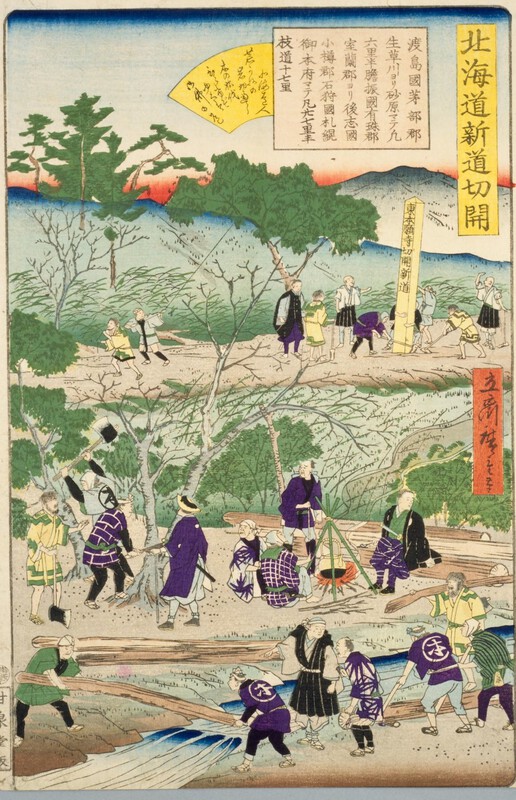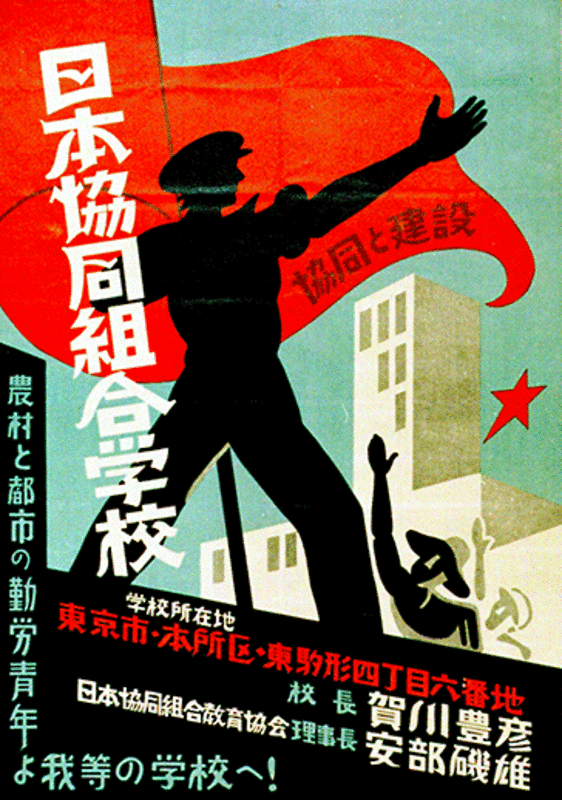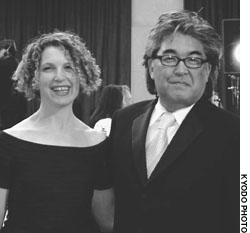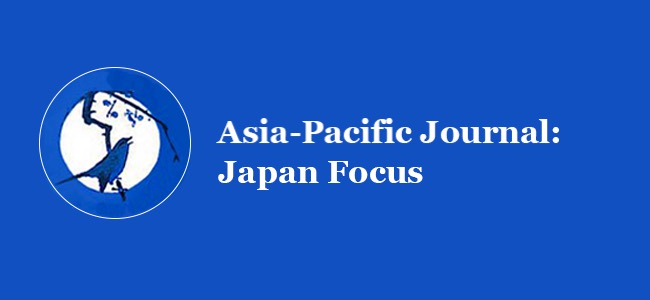A-bomb Legacy Fading: Steven Okazaki films hibakusha stories for future generations
By Mandy Willingham
LOS ANGELES (Kyodo) After the 60th anniversary of the atomic bombings of Hiroshima and Nagasaki passed last August, filmmaker Steven Okazaki began worrying that the attacks and their cautionary lessons are being forgotten.
Filmmaker Steven Okazaki and his wife, Peggy Orenstein,
at the U.S. Academy Awards in Hollywood in March.
“If you really ask young people, they know very little about Hiroshima and Nagasaki,” the 54-year-old Japanese-American said. “I think that’s very disturbing.”

Hibakusha anti-nuclear protestor in
New York on May 1, 2005.
While doing research recently for his upcoming film, the Oscar-winning filmmaker asked young people in Tokyo’s trendy Harajuku district about the significance of Aug. 6, 1945.
He expected at least half of them would recognize it as the day Hiroshima was bombed.
“We asked and all of them said ‘I don’t know,’ ” said Okazaki. “It was not a big survey, but not one of them knew the significance (of the date). And these people will grow up to be the voters of Japan.”
Okazaki is also concerned that Americans have little knowledge about their country’s nuclear legacy.
“In American schools we learn very little,” he said. “I think 90 to 95 percent of Americans know almost nothing about Hiroshima and Nagasaki.”
Hoping to increase awareness of the 1945 attacks, particularly the stories of the hibakusha, the filmmaker, who hails from Berkeley, has spent the past year developing a comprehensive documentary for U.S. cable network HBO.
“I feel like I’m going to contribute something and that when the hibakusha are gone (there will) be some record,” Okazaki said.
The documentary, set to air in 2007, will feature interviews with 30 hibakusha as well as scientists and plane navigators who were involved in the Hiroshima and Nagasaki bombings. The filmmaker said he wants to tell the stories of survivors and participants without academic or political analysis.
“(There will) be an American point of view and a Japanese point of view, but no historians and no politicians,” Okazaki said.
Okazaki’s interest in Hiroshima and Nagasaki began more than 25 years ago when his friends translated “Barefoot Gen,” Keiji Nakazawa’s classic autobiographical comic of the Hiroshima bombing, into English.
Impressed by Nakazawa’s work, he later met a group of hibakusha living in San Francisco who inspired him to make his first feature documentary, “Survivors.”
Okazaki followed the 1982 film with other projects documenting the complexities of racism, drug addiction and cultural identity.
His 1991 film, “Days of Waiting,” which tells the story of Estelle Ishigo, an American married to a Japanese, put in a Japanese-American internment camp during World War II, earned Okazaki an Academy Award for Best Documentary Short.

Estelle Ishigo’s drawing of an internment
camp.
His film,”The Mushroom Club,” was nominated for an Oscar in 2005 for best documentary short subject. It is a personal look at how hibakusha live with the emotional and often physical scars of the bombing while the significance of the devastating attack has faded in the minds of Hiroshima’s younger generations.
Okazaki said it is a challenge for the atomic bomb victims to share their experiences and speak out against nuclear warfare.
“I think the hibakusha feel like they’ve been telling their stories for so many years and not getting any response,” he said. “Many go to different places around the world to speak out against nuclear arms, but it’s to the same groups of people, and they don’t seem to be getting any bigger.”
It is important for Americans to hear the stories of the hibakusha and understand their continued relevance, the filmmaker said.
“Americans like to argue about Hiroshima and Nagasaki, but they don’t know anything about the hibakusha,” he said. “I feel like before you say ‘Bombs are bad,’ you should show what happened to these people.”
Okazaki attributed the American public’s lack of knowledge about the nuclear attacks and the aftermath to a failure by politicians, educators and other individuals to address the difficult subject.
“It’s a remarkable thing, how much misunderstanding and mythology there is,” he said.
Despite the lack of attention given to Hiroshima and Nagasaki, Okazaki is hopeful about what he says is a renewed motivation of hibakusha speak about their experiences.
“I think now there’s a surge of energy because the hibakusha have realized that this could be their last time to speak out,” the filmmaker said. “I feel like right now there’s more energy in the hibakusha movement than there’s been in many, many years.”
This article appeared in The Japan Times on Saturday, April 15, 2006. Posted at Japan Focus on April 16, 2006.







